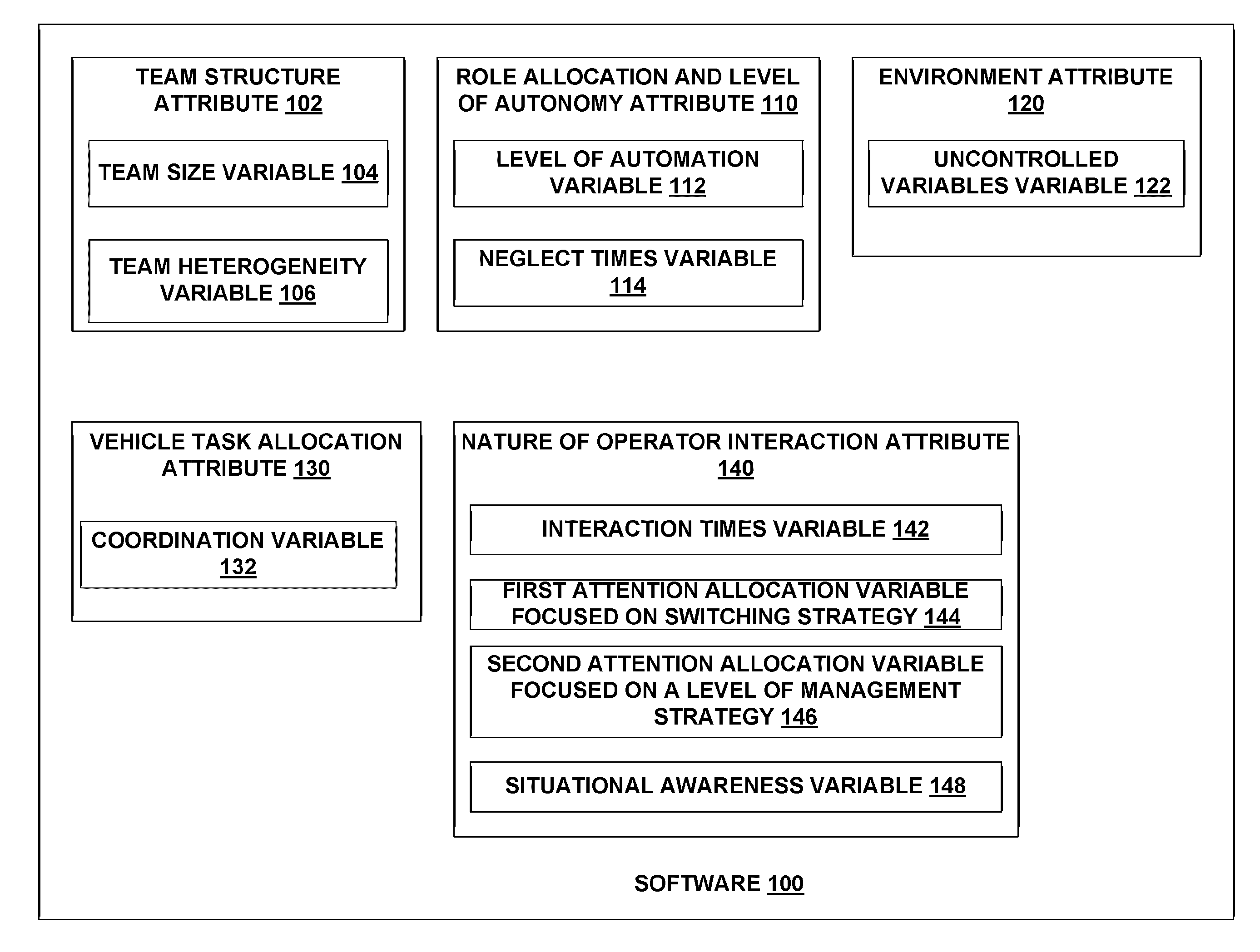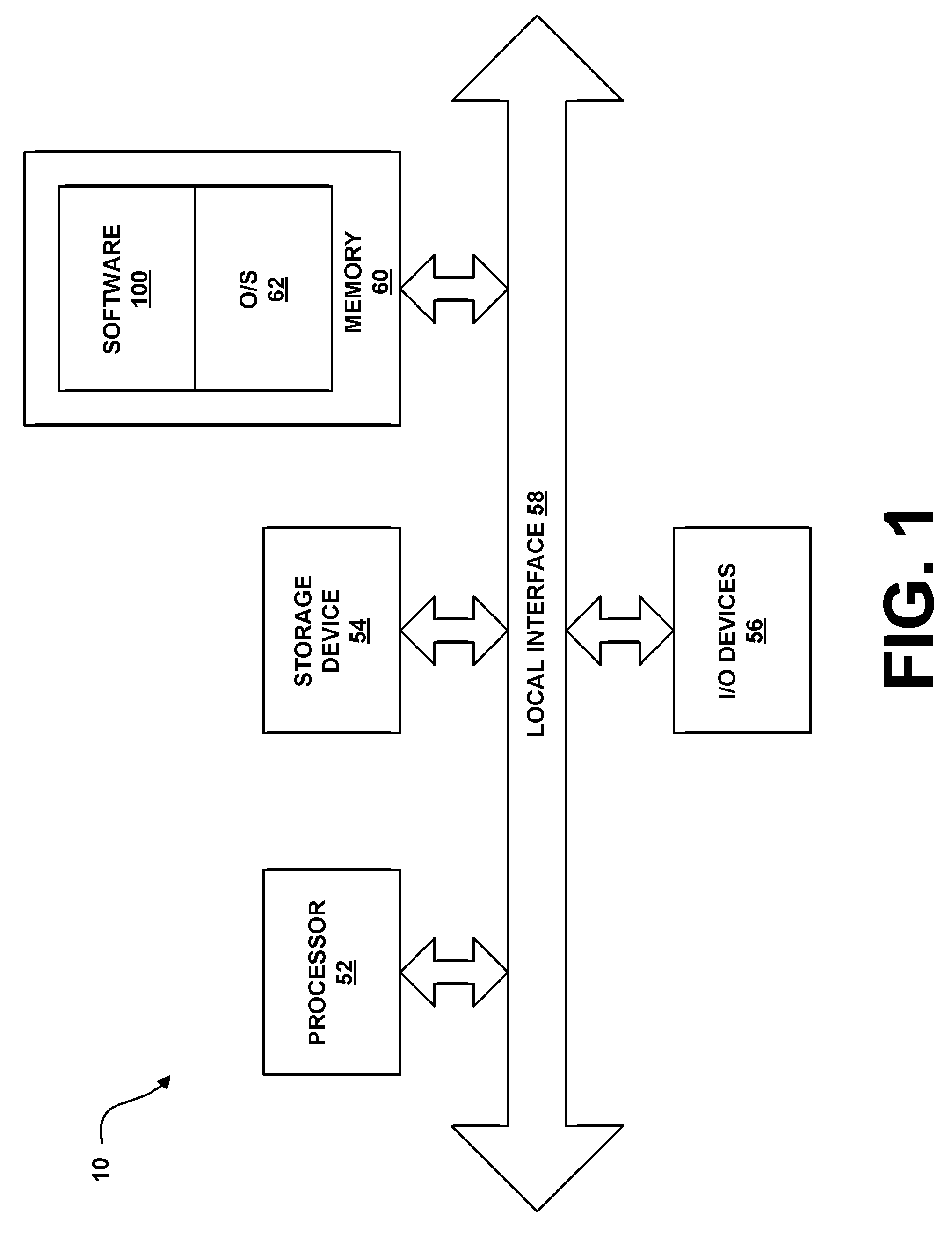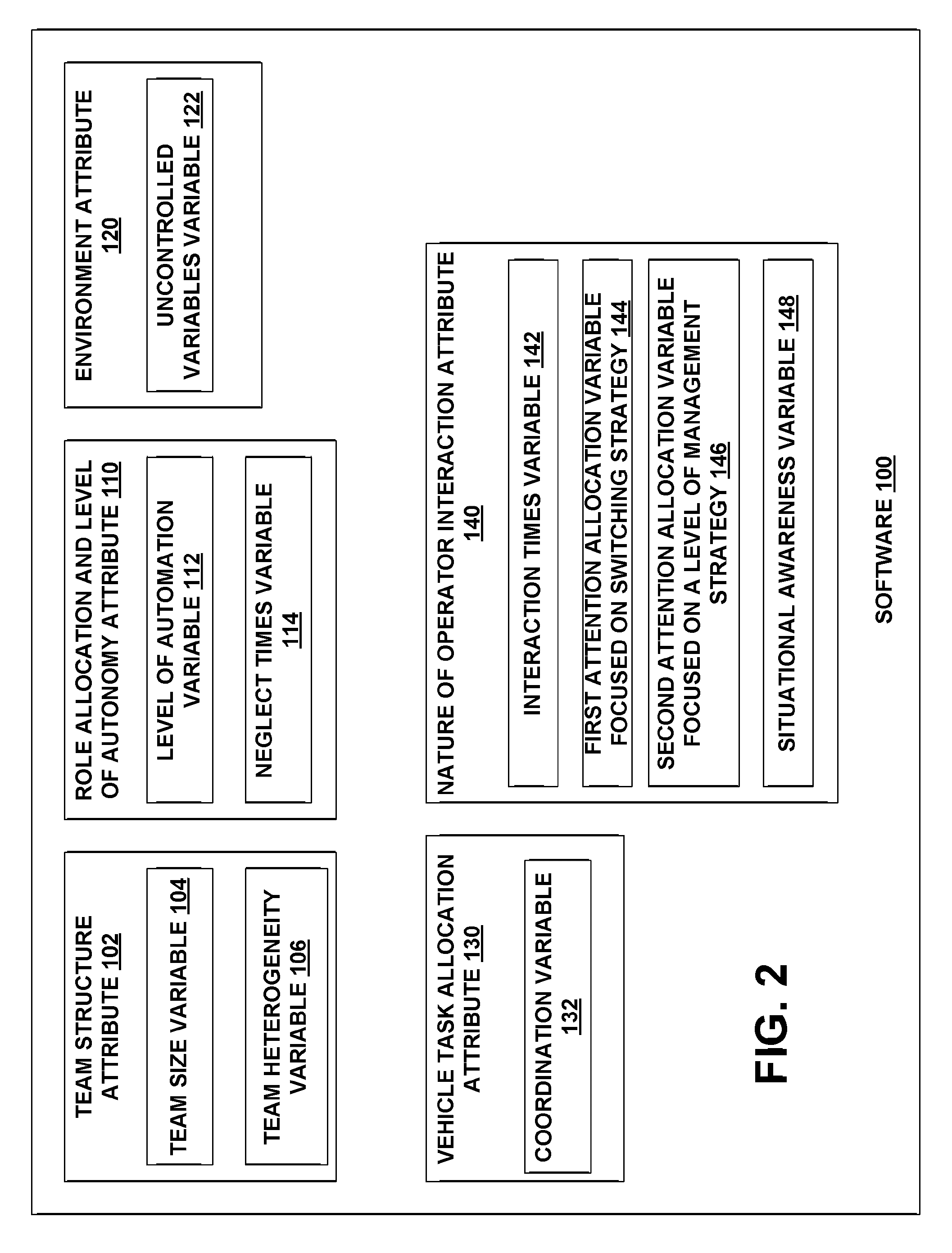System and method for modeling supervisory control of heterogeneous unmanned vehicles through discrete event simulation
a heterogeneous and heterogeneous technology, applied in the field of computer simulation, can solve the problems of high cost of process of performing experimentation to determine the number of unmanned vehicles that can be controlled by a single user, and the possibility of future uv systems with heterogeneous vehicle capabilities and tasks
- Summary
- Abstract
- Description
- Claims
- Application Information
AI Technical Summary
Benefits of technology
Problems solved by technology
Method used
Image
Examples
Embodiment Construction
[0019]The present modeling system and method provides a queuing-based multi-UV discrete event simulation (MUV-DES) model that assists designers of heterogeneous unmanned vehicle systems understand the impact of design decisions on the effectiveness of operator supervision of the unmanned vehicles. The modeling system and method capture both vehicle-team variables (including team composition and level of autonomy) and operator variables (including attention allocation strategies and situational awareness). In addition, the modeling system and method allow for varying of design variables so that results of different input variables may be determined.
[0020]Certain assumptions are made in accordance with the present system and method, which is referred to herein as a modeling system and method. The type of unmanned vehicle (UV) system that the present modeling system and method addresses is one where a single human operator is responsible for supervising a team of homogeneous or heterog...
PUM
 Login to View More
Login to View More Abstract
Description
Claims
Application Information
 Login to View More
Login to View More - R&D
- Intellectual Property
- Life Sciences
- Materials
- Tech Scout
- Unparalleled Data Quality
- Higher Quality Content
- 60% Fewer Hallucinations
Browse by: Latest US Patents, China's latest patents, Technical Efficacy Thesaurus, Application Domain, Technology Topic, Popular Technical Reports.
© 2025 PatSnap. All rights reserved.Legal|Privacy policy|Modern Slavery Act Transparency Statement|Sitemap|About US| Contact US: help@patsnap.com



